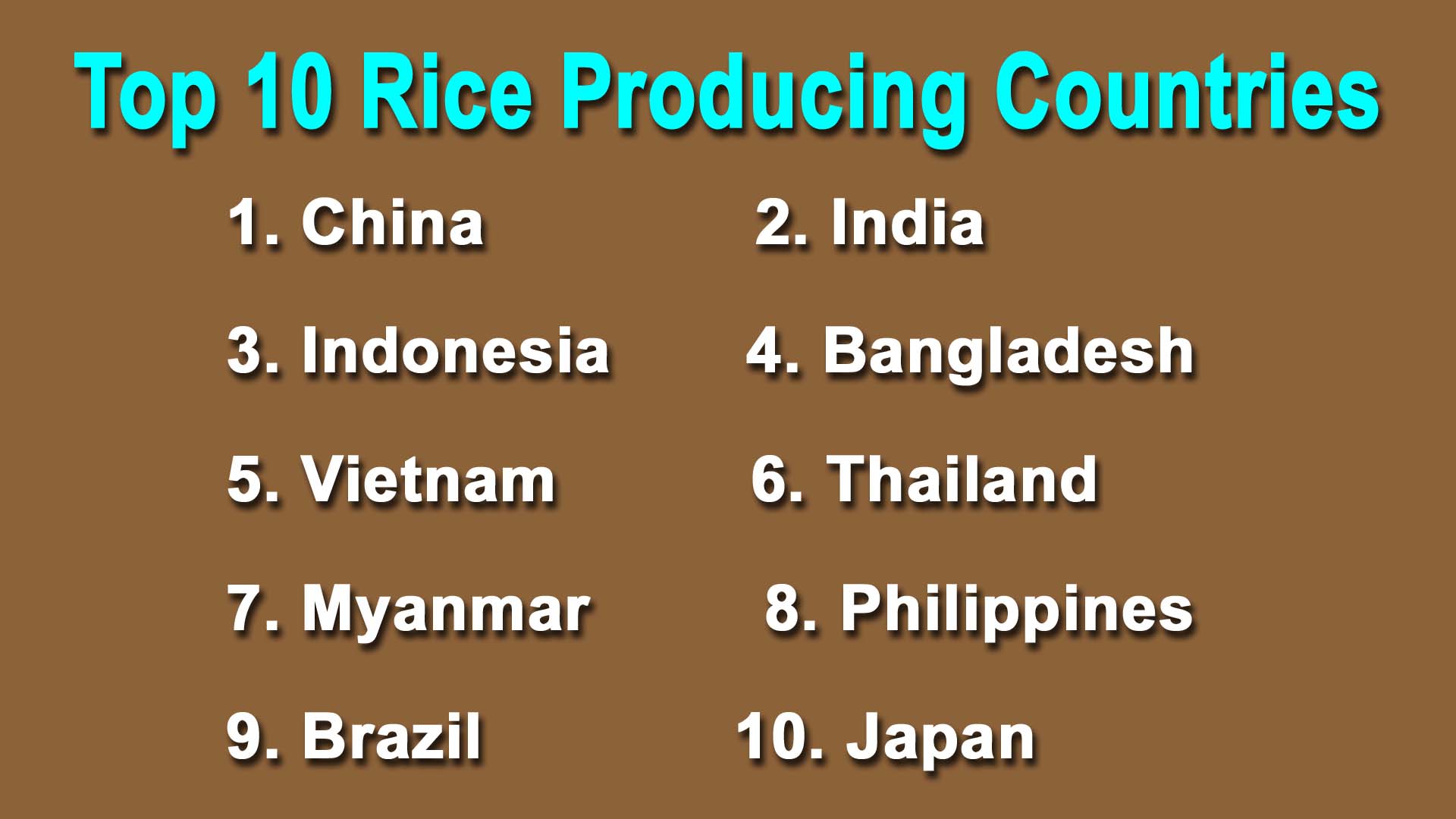

 Top 10 Rice Producing Countries of the World
Top 10 Rice Producing Countries of the World
Rice, one of the most fundamental staple foods globally, plays a crucial role in ensuring food security for billions of people. With its versatility and importance in various cuisines, rice cultivation has become a cornerstone of agriculture in many countries. Let’s delve into the top 10 rice-producing nations, showcasing their annual production and the significance of rice in their economies.
1. China
China leads the world in rice production, with an annual output exceeding 200 million metric tons. Its vast agricultural landscape, coupled with advanced farming techniques, contributes significantly to this impressive figure. Rice holds a central position in Chinese cuisine and culture, making its production pivotal for food security and economic stability.
2. India
India closely follows China in rice production, with an output approaching 180 million metric tons annually. The country’s diverse climatic conditions and extensive agricultural practices make it a powerhouse in rice cultivation. Rice is a dietary staple for a majority of Indians, reflecting its socioeconomic importance and cultural significance.
3. Indonesia
Indonesia ranks third in global rice production, with an annual yield surpassing 70 million metric tons. The country’s favorable climate and extensive paddy fields support robust rice cultivation. Rice serves as a primary source of nourishment for the Indonesian population and contributes significantly to its agricultural economy.
4. Bangladesh:
Bangladesh is another major player in rice production, with an annual output exceeding 50 million metric tons. Despite its limited land area, the country employs efficient farming methods to sustain high yields. Rice forms the cornerstone of Bangladeshi cuisine and supports millions of livelihoods across the agricultural sector.
5. Vietnam
Vietnam boasts a thriving rice industry, with an annual production of over 40 million metric tons. The country’s fertile Mekong Delta and innovative farming practices contribute to its agricultural success. Rice plays a vital role in Vietnamese cuisine and export markets, driving economic growth and rural development.
6. Thailand:
Thailand is renowned for its high-quality rice varieties and substantial annual production, which exceeds 30 million metric tons. The country’s advanced agricultural techniques and favorable climate facilitate consistent yields. Rice exports contribute significantly to Thailand’s economy, making it a global leader in the rice trade.
7. Myanmar
Myanmar, with its extensive agricultural land and favorable climate, produces over 20 million metric tons of rice annually. Rice cultivation forms the backbone of Myanmar’s economy, supporting rural livelihoods and ensuring food security. The country’s diverse rice varieties cater to both domestic consumption and international markets.
8. Philippines
The Philippines maintains a strong presence in the global rice market, with an annual production of around 15 million metric tons. Despite challenges such as land scarcity and natural disasters, the country sustains a steady rice output. Rice holds cultural and economic significance in the Philippines, playing a vital role in daily meals and agricultural livelihoods.
9. Brazil
Brazil’s vast agricultural resources contribute to its substantial rice production, which exceeds 10 million metric tons annually. The country’s advanced farming techniques and favorable climatic conditions support efficient rice cultivation. While rice is not as central to Brazilian cuisine as in other nations, its production significantly contributes to agricultural diversity and export revenues.
10. Japan
Japan rounds out the top 10 rice-producing countries, with an annual output of over 7 million metric tons. Despite its limited arable land, Japan employs advanced agricultural technologies to sustain rice cultivation. Rice holds deep cultural significance in Japanese society, reflecting traditional values and culinary preferences.
These top 10 rice-producing countries collectively shape the global rice market, ensuring a stable supply of this essential staple food. Beyond meeting domestic needs, rice production plays a pivotal role in driving economic growth, supporting livelihoods, and preserving cultural heritage. As the world’s population continues to grow, the significance of rice cultivation in ensuring food security and sustainable development remains paramount.